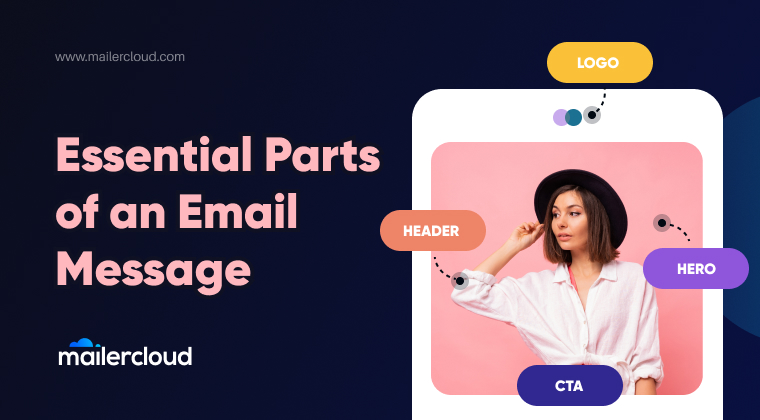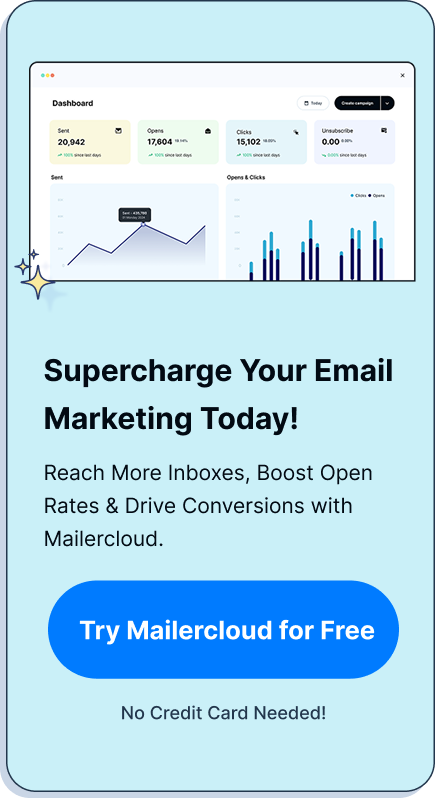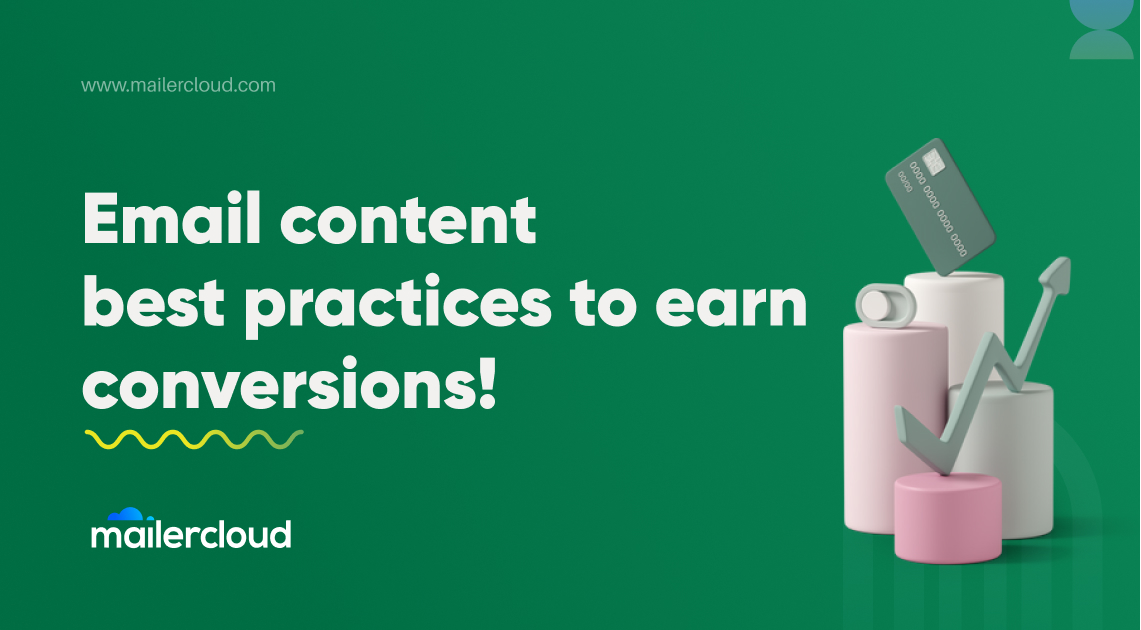Every email you send is an opportunity to engage and impress. Whether it’s a personal message to a friend or a pivotal part of an email marketing campaign, understanding what are the parts of an email can be the difference between its success or failure. This article is a treasure trove of information for anyone looking to elevate their email game. From crafting an attention-grabbing subject line to creating a strong call to action, we will dissect every part of an email and show you how to increase email open rates and ensure your emails never see the spam folder.
Table of Contents
1. The Importance of a Well-Crafted Email Address
The email address is the first part of an email that the recipient sees. The parts of an email address include a local part, the ‘@’ symbol, and the domain part, which often contains the top-level domain. A professional-looking email address can add credibility to the email and prevent it from being flagged as spam.
If the email is for business purposes, the email address itself could include the company name, which helps in establishing credibility and brand recognition (e.g., [email protected]).
2. An Effective Subject Line
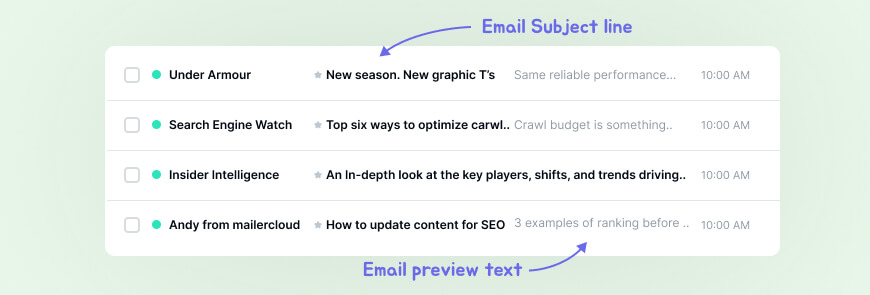
The subject line in certain email providers can determine if the recipient will open the email or not. An attention-grabbing subject line should be concise, clear, and relevant to the content inside your email. It’s best to avoid using words that trigger spam filters.
To create an effective subject line:
- Be Concise: Keep it short and to the point. Aim for around 30-50 characters to ensure it’s readable on mobile devices.
- Clarity: Clearly state the purpose of the email. Avoid being vague so the recipient knows what to expect.
- Personalize: Whenever possible, personalize the subject line of your marketing emails to engage the recipient and make it relevant to them.
- Urgency: If appropriate, create a sense of urgency or importance without resorting to clickbait tactics.
- Avoid Spam Triggers: Steer clear of all caps, excessive punctuation, and spammy words that can trigger spam filters.
- Test: Use A/B testing for different subject lines to see which performs better with your audience and your email server.
3. The Salutation
The salutation sets the tone of your email. It’s essential to address the recipient by their name if known, as this adds a personal touch and shows respect. In formal business emails, using titles and last names is common practice.
The salutation is a vital part of an email that demonstrates respect and sets the tone. Address the recipient by name and use formal titles for professional correspondence. This personalisation fosters rapport and conveys your attention to detail. Adjust the level of formality based on your relationship with the recipient to ensure appropriateness and to influence the email’s reception positively.
4. The Role of the Sender in Email Deliverability
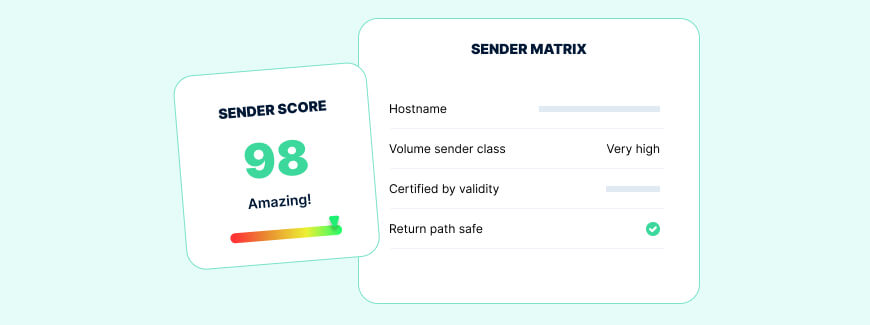
The sender’s email address is pivotal in ensuring deliverability. A consistent sender’s email address helps to build trust with email clients and certain email providers like Gmail. A verified blue tick and recognizable sender name also helps users to quickly identify your business.
Key aspects of the sender’s role include:
- Reputation: The sender’s email and IP reputation significantly influence deliverability. A good reputation is earned by consistently sending wanted emails and avoiding practices that lead to spam complaints.
- Authentication: Senders should have proper authentication protocols in place, such as SPF (Sender Policy Framework), DKIM (DomainKeys Identified Mail), and DMARC (Domain-based Message Authentication, Reporting & Conformance), to verify that they are permitted to send emails from their domain.
- Content Quality: The sender must ensure the content is relevant, well-formatted, and free of spam-triggering elements. High-quality content is less likely to be flagged by spam filters.
- Engagement: The level of engagement emails receive (opens, clicks) can impact future deliverability. Senders should aim to keep their audience engaged to maintain a positive sending reputation.
- List Management: Maintaining a clean email list by removing inactive subscribers and promptly addressing bounces and unsubscribes helps preserve sender reputation and deliverability rates.
5. Email Body Content

The main message or body content of your email is where you communicate your value proposition or personal message to the recipient. The body should be well-structured, easy to read (considering mobile devices), and free from errors.
Email body content is important because it:
- Conveys your message clearly
- Reflects professionalism and etiquette
- Specifies the desired action
- Uses proper formatting and structure
- Can convey urgency if necessary
Well-crafted email content helps ensure your message is understood and acted upon efficiently. And using a professional AI email writer makes this process easier to create clear and relevant emails. It helps save you time and effort while improving the quality of your messages.
6. The Power of Visuals and Personalisation in Email Content
Incorporating visuals into your dynamic email content can make the email feel more engaging and memorable.Images should be relevant and optimized for quick loading on all devices, including Gmail or mobile. Visuals can capture the attention of your recipients and make your email stand out in their crowded inbox. Ensure that the visuals you use in your emails align with your brand identity. Consistency in color schemes, fonts, and overall design can help reinforce brand recognition and create a cohesive experience for your recipients. A great sample can be the case of Bookatrekking, a trekking company specializing in hiking destinations. Thus, if its client orders a tour around Kaiserkrone, there’s a probability that he might receive an email from the trekking experts that will create an email visual devoted to these destinations.
Personalisation goes beyond using the recipient’s name; it involves tailoring the content to their interests and needs. This can significantly increase engagement and make the recipient feel valued. Use segmentation to divide your email list into smaller segments based on demographics, interests, or purchase history. This allows you to create more targeted and personalized content that resonates with each segment’s specific needs and preferences.
7. Crafting a Strong Call to Action (CTA)
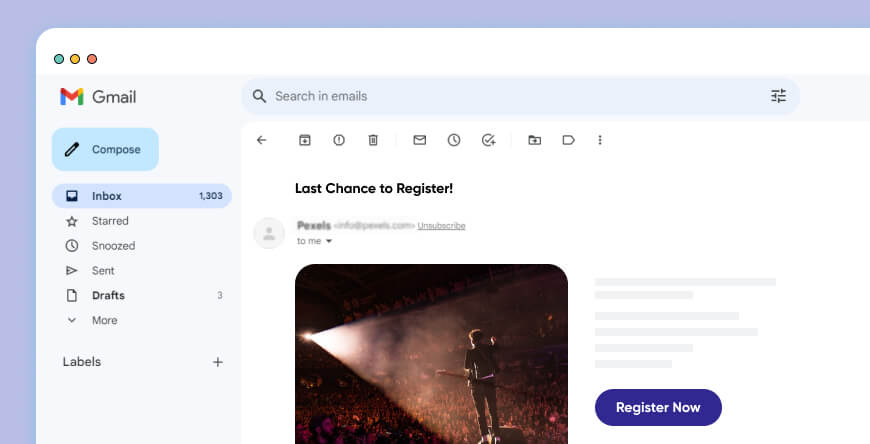
To encourage prompt responses or actions, you can create a sense of urgency in your email copy. Phrases that imply limited time offers or exclusive opportunities compel recipients to act quickly.
A strong call to action, such as a CTA button, is vital for converting recipients into customers or active participants. It should be clear, compelling, and easy to find at the end of your email.
- Be Clear and Specific
- Create a Sense of Urgency
- Highlight the Benefits
- Use Persuasive Language
- Keep it Concise
- Make it Stand Out
- Test and Iterate
8. The Significance of an Email Signature
An email signature at the end of your email provides additional contact information and can include social media links, disclaimers, or even a parting thought. It adds a professional touch and can make it easier for recipients to reach out for more information.
An email signature can contribute to your branding efforts. By incorporating your company logo, colors, and design elements, you create a consistent visual identity across your email communications. An email signature software can also be an effective marketing tool. Having a predefined email signature saves time and effort, especially when sending frequent emails.
The Purpose of Email Open Rates
Email open rates are a crucial metric in effective email marketing campaigns and newsletters. A high open rate indicates that your subject line of your interactive newsletter was effective and that your sender’s reputation is good. Marketers use this data to refine their strategies.
This metric helps marketers assess:
- Audience Engagement: Indicates how well the subject line and sender’s reputation resonate with recipients.
- Campaign Effectiveness: Helps evaluate the success of email content and timing.
- Segmentation Accuracy: Shows how well the targeted audience aligns with the email’s content.
- Deliverability Issues: Low open rates may suggest problems with email delivery to inboxes.
By analyzing open rates, marketers can fine-tune their strategies to improve future engagement.
Advanced Techniques for Stellar Email Campaigns
Understanding Different Parts of an Email for Optimization
Each part of an email serves a specific purpose and optimizing each element can lead to better email performance. From the subject line down to the footer, every part should align with your goal.
Segmenting Your Email List for Targeted Content
Segmenting your email list allows you to send more targeted and relevant content to different groups within your audience. This personalized approach can significantly increase open rates and engagement.
A/B Testing: Refining Email Elements for Success
A/B testing different parts of your email, such as subject lines or CTA placement, helps you understand what resonates with your audience. This data-driven approach can refine your overall strategy for successful emails.
The Synergy of Every Part of an Email
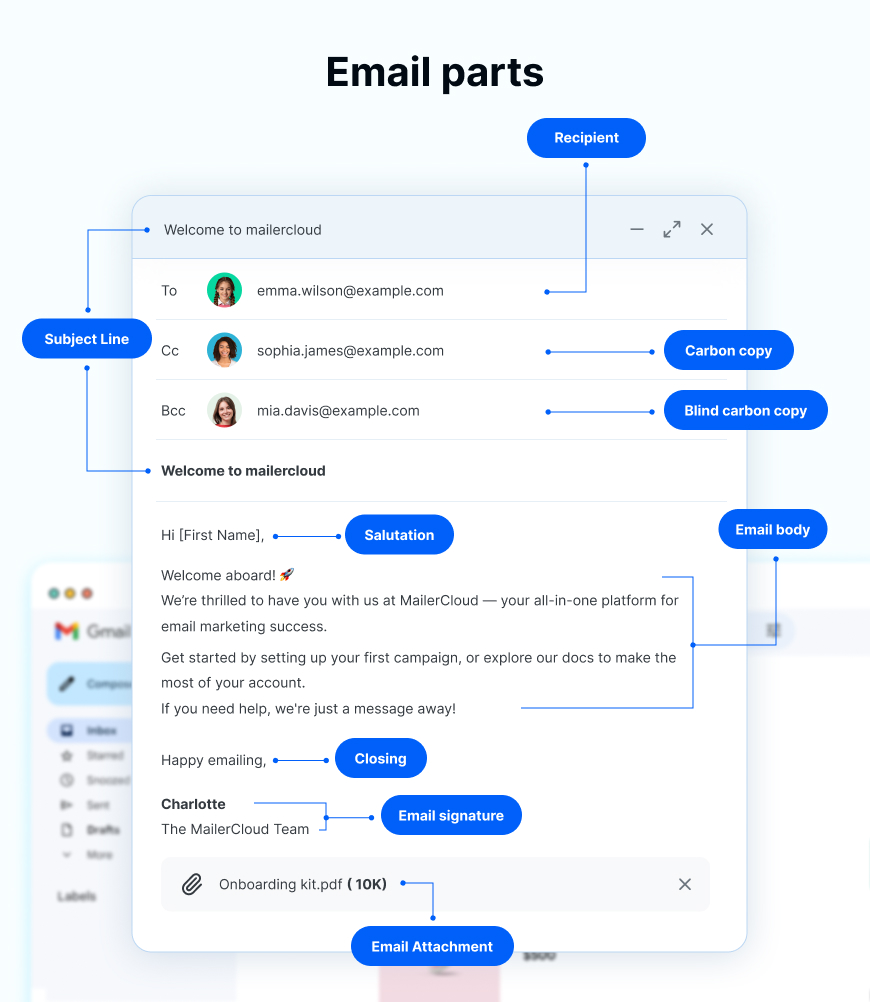
Understanding the main parts of an email is crucial to creating impactful communication. A professional email address not only establishes credibility but also ensures that the email address appears trustworthy to recipients. Crafting an engaging email subject line is one of the important parts of an email as it determines whether users will open an email or move it to the spam folder.
A personalized salutation and a well-structured body of the email help convey the message you want to convey clearly. Including relevant visuals and images in the email enhances the message and address, making the content more engaging. The email footer, as one of the critical parts of an email, ensures professionalism while providing essential contact information to end the email effectively.
Optimizing every part of the email, from the email subject to the email footer, boosts overall performance. The use of an intuitive email builder or the right email service provider ensures seamless creation of the 7 parts of an email that contribute to its success. Knowing the different parts of an email—like the anatomy of an email—empowers you to deliver messages that resonate.
Segmenting your audience and using A/B testing can refine each element of the email. Whether it’s the email subject line, the body of an email, or the components of an email, every section of an email plays a role in its effectiveness. By incorporating personalization and clarity, you can ensure your email can help recipients understand the message of your email without overwhelming them.
With over billions of email users worldwide, email marketing is still one of the most effective communication channels. From the domain name in your email address to the file to the email attachments, every detail matters. A well-crafted email enhances the importance of email communication and ensures recipients enjoy reading your email.
By mastering the various parts of an email, you can craft the perfect email that reaches the email inbox, connects with recipients, and drives meaningful actions. The effectiveness of your email depends on how well you align the email parts together, ensuring that the tone for your email matches the message you want to convey.
Lina is a content writer with a passion for reading, writing, and cooking. She aims to explore the world of words and flavors. With a deep love for literature and a knack for creating mouthwatering recipes, she strive to engage and inspire others through her work.





























